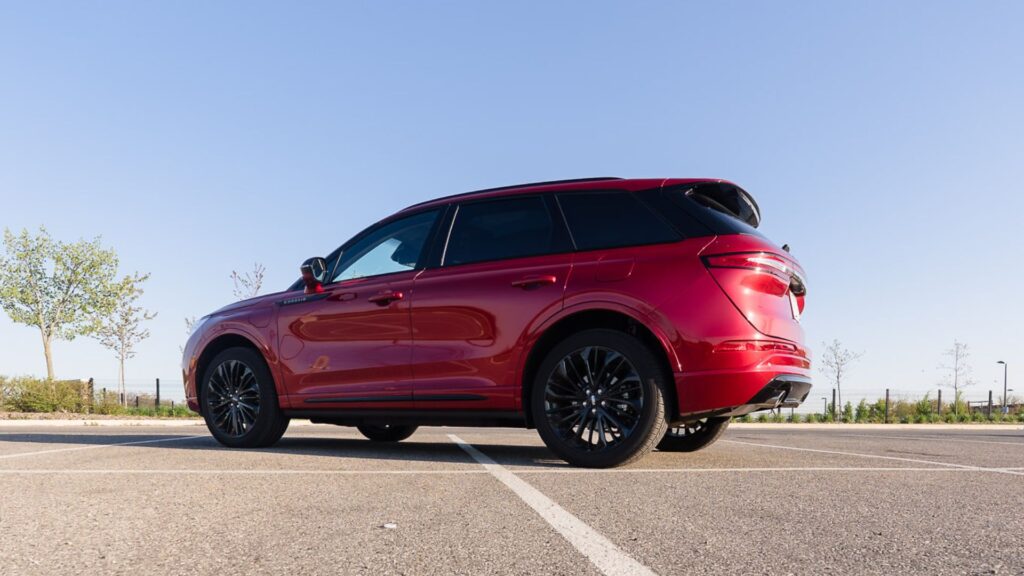When I first laid eyes on the 2025 Lincoln Corsair last week, I genuinely thought I was looking at a larger SUV. Its sleek, premium styling gives it an upscale and substantial appearance that belies its actual footprint. What surprised me even more was learning that this elegantly dressed compact crossover is essentially Lincoln’s version of the Ford Escape. Did you know that? Because I certainly didn’t—and I’m in the car business.
The Lincoln Corsair is one of those hidden gems in the luxury compact SUV segment. Despite its upscale appeal and strong performance, the Corsair remains something of a mystery to most Canadian consumers. I look at lease takeover listings on LeaseBusters.com daily and, frankly, I can’t remember the last time I saw a Corsair posted—if I’ve ever seen one at all. That’s not ideal for Lincoln, especially considering the mainstream popularity of the Ford Escape, which shares much of its DNA.
That said, Lincoln is currently offering very attractive lease incentives for the 2025 Corsair, including a low 2.9% lease rate paired with strong residual values over 36- and 48-month terms. When you factor in available cash bonuses and potential stackable rebates, the Corsair becomes a surprisingly competitive lease option—possibly even undercutting the 2025 Ford Escape on monthly payments. Lincoln may not be making much noise about the Corsair, but the numbers speak for themselves.
The Corsair nameplate replaced the Lincoln MKC for the 2020 model year (not to be confused with the MKX, which evolved into the Lincoln Nautilus). For 2025, the Corsair line-up includes the Premiere AWD starting at $49,300, the Reserve AWD from $56,300, and the Grand Touring PHEV at $59,990. These prices position the Corsair well within the competitive luxury CUV field, rubbing shoulders with the likes of the Genesis GV70 ($60,000+), Mercedes-Benz GLC ($59,500), Acura RDX ($53,800), and Lexus NX ($50,815). To stand out, Lincoln must do more to make people aware this vehicle exists—especially since, with current leasing incentives, the Corsair can be the most cost-effective option of the group.
One area where the Corsair shines is in its interior user experience. The dashboard layout and infotainment interface feel distinctively upscale and refreshingly different from others in this segment. It’s a reminder that Lincoln still knows how to build a premium cabin. My tester—the 2025 Corsair Grand Touring PHEV—felt luxurious and tech-forward. The plush power-adjustable seats provided ample legroom and a wide range of customizations that made both city cruising and highway drives comfortable and relaxing. The Corsair’s renowned “whisper-quiet” ride is enhanced by a rich, immersive audio system that adds to the sense of refined isolation.
Under the hood, the Grand Touring trim pairs a 2.5L inline-4 plug-in hybrid engine with electric assistance, delivering a combined 266 horsepower and a healthy dose of torque. This PHEV setup is exclusive to the Corsair and provides silent electric driving for short commutes, plus full hybrid flexibility for longer trips. For those not interested in the plug-in variant, the standard Corsair models offer a 2.0L turbocharged 4-cylinder engine that produces 250 horsepower and 275 lb-ft of torque—a significant performance step up from the Escape’s 1.5L 3-cylinder turbo, which powers a vehicle of similar size and weight.
The ride quality is composed, and multiple drive modes—Normal, Conserve (eco), Excite (sport), Slippery, and Deep Conditions—allow drivers to tailor the vehicle’s behavior to their environment and mood. These selectable settings add versatility and personality to the Corsair, making it feel more dynamic than some of its luxury-branded competitors.
One thing Lincoln has done well with the Corsair is strategically separating it from the Escape in terms of available powertrains. Ford’s Escape offers affordability-focused options like the 3-cylinder turbo or the 2.5L hybrid, while the Corsair targets premium buyers with a more powerful 2.0L turbo and an exclusive PHEV setup. The result is a clearer distinction between the two vehicles, allowing buyers to pick the model that best fits their needs and budget.
However, pricing can escalate quickly depending on the options selected. My test vehicle, the Grand Touring PHEV, came well-equipped with Red Carpet Metallic paint ($950), 20″ wheels ($1,770), the 301A Equipment Group ($3,800), plus freight and air tax ($2,395 and $100 respectively). The final price? $68,985. While still competitive for a plug-in hybrid luxury SUV, it’s getting close to the $70K mark—territory typically dominated by German brands. Had it included the even more premium 302A package, it would’ve crept even higher.
Still, the Corsair holds its own. It’s refined, quietly powerful, and stylish without being ostentatious. Its leasing affordability, unique dashboard tech, whisper-quiet ride, and multiple drivetrain options make it a strong contender in the luxury crossover segment.
If there’s one thing Lincoln needs to do, it’s to better promote this vehicle—especially in Canada. The Corsair isn’t just a premium Escape; it’s a thoughtfully designed luxury SUV with real value and appeal. With competitive lease pricing, solid performance, and a compelling plug-in hybrid variant, the 2025 Lincoln Corsair deserves a lot more attention than it currently gets.
James Matthews is the President, General Manager and Co-Founder of LeaseBusters. James launched LeaseBusters in 1990 and is considered one of Canada’s leading experts on new vehicle leases, lease-take-overs and vehicle lease (re)marketing. James can be reached directly at jmatthews at leasebusters.com
